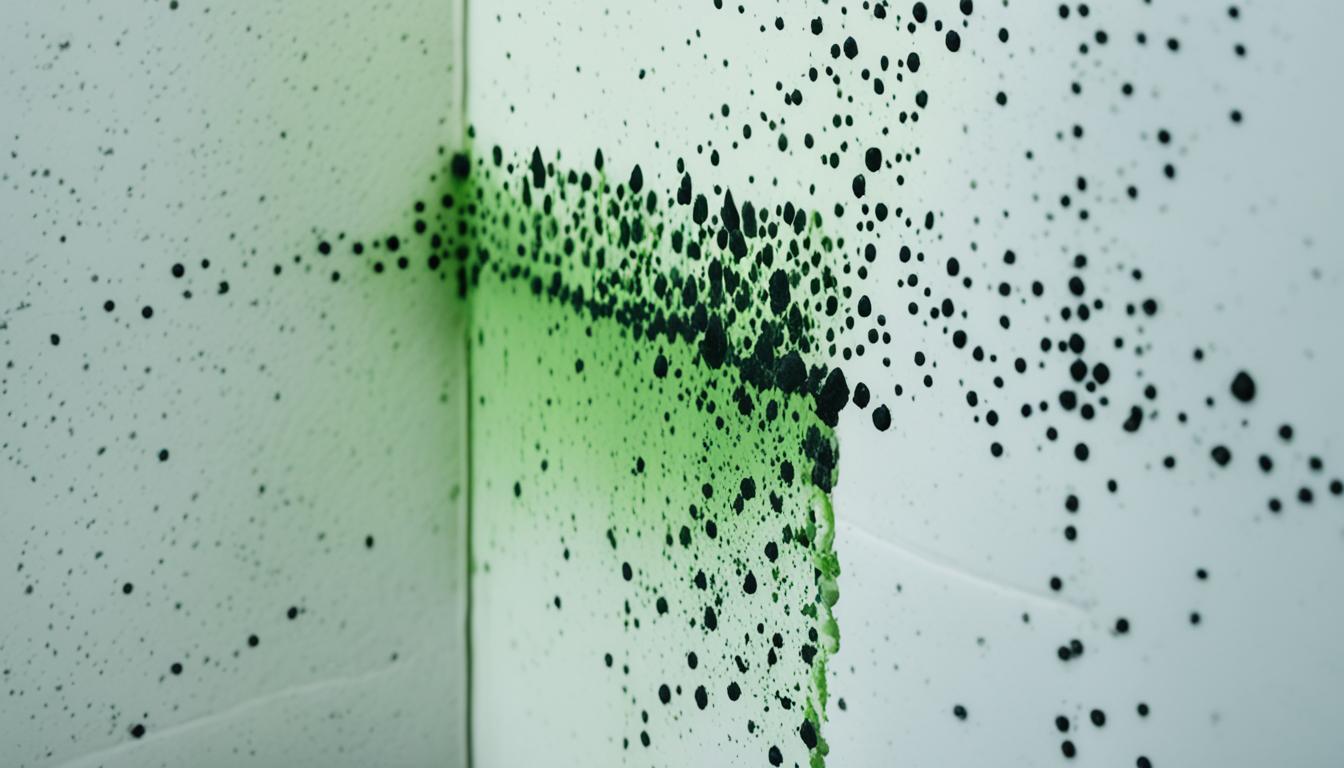
Identifying Fungus – r/Mold, Spotting Mold Issues
In this section, we will explore the subreddit r/Mold, a valuable resource for gaining insights into mold identification, inspection techniques, and effective methods for preventing and removing mold growth in your household. By understanding the signs of mold and how to address it, you can keep your home safe from potential fungus threats.
Key Takeaways:
- Visit r/Mold for valuable information on mold identification, inspection, prevention, and removal.
- Learn how to spot signs of mold growth in your home.
- Understand the importance of effective mold inspection techniques.
- Discover practical tips for preventing mold and creating a mold-free home environment.
- Be aware of safe and effective methods for removing mold from your household.
Understanding Mold: Identification and Inspection
In this section, we will delve into the process of mold identification and differentiating it from mildew. Understanding the difference between these two types of fungi is crucial for effective mold inspection and remediation.
Identifying Mold vs Mildew
While mold and mildew are both types of fungi that thrive in moist environments, there are key differences in their appearance and characteristics.
“Mold tends to appear fuzzy or slimy and comes in various colors, including green, black, and white. Mildew, on the other hand, is typically powdery and appears in shades of gray or white. It’s important to note that mold can cause more severe health issues compared to mildew.”
Common Areas for Mold Growth
Mold can grow in various areas of your home, especially where moisture is present. Understanding the common areas where mold tends to thrive will help you focus your mold inspection efforts:
- Bathrooms
- Kitchens
- Basements
- Crawlspaces
- Attics
Signs of Mold Growth
Identifying the early signs of mold growth is essential for timely intervention. Keep an eye out for the following indicators during your mold inspection:
- Visible mold: Look for visible mold growth on walls, ceilings, furniture, and other surfaces.
- Musty odor: Mold often produces a distinctive musty smell. Pay attention to any unusual odors in your home.
- Water damage: Areas with water damage, such as leaks or flooding, are more prone to mold growth.
- Allergic reactions: If you or your family members experience unexplained allergies or respiratory symptoms, mold could be the underlying cause.
By understanding the characteristics of mold and mildew, identifying common areas for mold growth, and recognizing the signs of mold infestation, you can effectively protect your home and prevent potential health risks.
Preventing Mold: Tips for a Mold-Free Home
Mold growth in your home can lead to various health issues and damage to your property. Taking preventive measures is essential to create a mold-free environment and protect your household. Here are some practical tips for preventing mold:
1. Manage Moisture Levels
Excess moisture is a primary factor that contributes to mold growth. Keep your home dry by promptly fixing any leaks in plumbing, roofs, or windows. Monitor humidity levels and use dehumidifiers in damp areas such as basements and bathrooms. Properly ventilate your home to reduce moisture accumulation.
2. Improve Ventilation
Proper airflow is crucial in preventing mold. Ensure that your home has adequate ventilation in areas prone to high humidity, such as kitchens and bathrooms. Install exhaust fans to remove moisture and prevent condensation. Regularly clean air filters in HVAC systems to maintain optimal airflow.
3. Use Mold-Resistant Materials
When renovating or building, choose mold-resistant materials for surfaces prone to moisture, such as bathrooms and kitchens. Use mold-resistant drywall, paints, and insulation to minimize the likelihood of mold growth.
4. Clean and Dry Spills Promptly
Accidental spills and water leaks should be attended to promptly. Thoroughly clean and dry affected areas within 24-48 hours to prevent mold from taking hold. Use bleach or a mold cleaner to disinfect surfaces.
5. Properly Maintain Gutters and Downspouts
Clogged gutters and downspouts can lead to water accumulation around your home’s foundation, increasing the risk of mold growth. Regularly clean and maintain gutters to ensure proper water drainage and prevent excess moisture from seeping into your home.
6. Monitor Indoor Plants
Indoor plants can contribute to moisture buildup if not properly cared for. Avoid overwatering and ensure adequate drainage for potted plants. Place plants on trays with pebbles to prevent water accumulation.
Follow these mold prevention tips to create a healthy living environment free from the potential risks associated with household mold. By being proactive in preventing mold growth, you can safeguard your home and the well-being of your loved ones.

Implementing these practical tips can help you maintain a mold-free home. By managing moisture levels, improving ventilation, using mold-resistant materials, promptly cleaning spills, maintaining gutters, and monitoring indoor plants, you can effectively prevent mold growth and protect your household from potential health issues.
Removing Mold: Safe and Effective Methods
To ensure a healthy living space, it is crucial to understand safe and effective methods for mold removal. Whether it’s the result of water damage or excessive moisture in your home, mold can pose serious health risks if left untreated. Professional mold testing is essential to accurately assess the extent of the issue and determine the appropriate course of action.
Black mold, also known as Stachybotrys chartarum, is a particularly concerning type of mold due to its potential health hazards. Exposure to black mold can lead to various symptoms, including respiratory issues, allergies, and even neurological problems. If you suspect the presence of black mold in your home, it’s important to address it promptly and thoroughly.
When it comes to the remediation process, it’s crucial to follow proper guidelines to ensure the complete removal of mold. The steps involved may vary depending on the severity of the infestation, but they generally include:
- Isolation: Closing off the affected area to prevent the spread of mold spores to other parts of the house.
- Protection: Wearing personal protective equipment (PPE) such as gloves, goggles, and masks to minimize exposure to mold and its potentially harmful particles.
- Removal: Removing any visible mold and contaminated materials, such as drywall, carpeting, or furniture, that cannot be salvaged.
- Cleaning: Thoroughly cleaning and disinfecting all surfaces in the affected area to eliminate any remaining mold spores.
- Drying: Ensuring that the affected area is adequately dried to prevent further mold growth.
- Prevention: Identifying and addressing the underlying cause of the mold growth, such as fixing plumbing leaks or improving ventilation, to prevent future infestations.
It’s important to note that for extensive mold infestations or cases involving black mold, it is highly recommended to seek professional assistance. Certified mold remediation specialists have the expertise, experience, and specialized equipment to handle large-scale mold removal safely and effectively.
“Proper mold removal requires thorough assessment, meticulous execution, and preventive measures to create a mold-free environment.”
By following safe and effective mold removal methods and addressing the underlying causes, you can create a healthy living space for you and your family. Remember, prevention is key in avoiding the potential health risks and costly repairs associated with mold infestations.
Professional Mold Testing: Ensuring Accurate Assessment
If you suspect mold growth in your home, professional mold testing is crucial to ensure accurate assessment and appropriate remediation. Licensed mold inspectors use specialized equipment and techniques to identify and evaluate the extent of mold infestations. This thorough approach helps in determining the most effective course of action for proper mold removal.

SYMPTOMS OF BLACK MOLD EXPOSURE:
- Coughing and wheezing
- Shortness of breath
- Nasal congestion
- Eye irritation
- Throat irritation
- Headaches or migraines
- Chronic fatigue
- Memory problems
- Mood swings
Conclusion
In conclusion, r/Mold is an invaluable resource for anyone seeking insights and discussions on mold identification, inspection, prevention, and removal. By actively participating in this subreddit community, you can gain valuable knowledge and guidance from experts and experienced individuals in dealing with mold-related issues.
Being alert to the signs of mold growth and staying informed about effective preventive measures is crucial for maintaining a mold-free home environment. Regular inspections, along with prompt action to address any potential mold issues, can significantly reduce the risk of mold-related health hazards and property damage.
Remember, if you suspect the presence of mold in your home, it is essential to seek professional assistance. Fix Mold Miami offers comprehensive mold assessment and remediation services to ensure the safety and well-being of your household. Contact Fix Mold Miami at 305-465-6653 for expert guidance and a thorough evaluation of your mold concerns.




